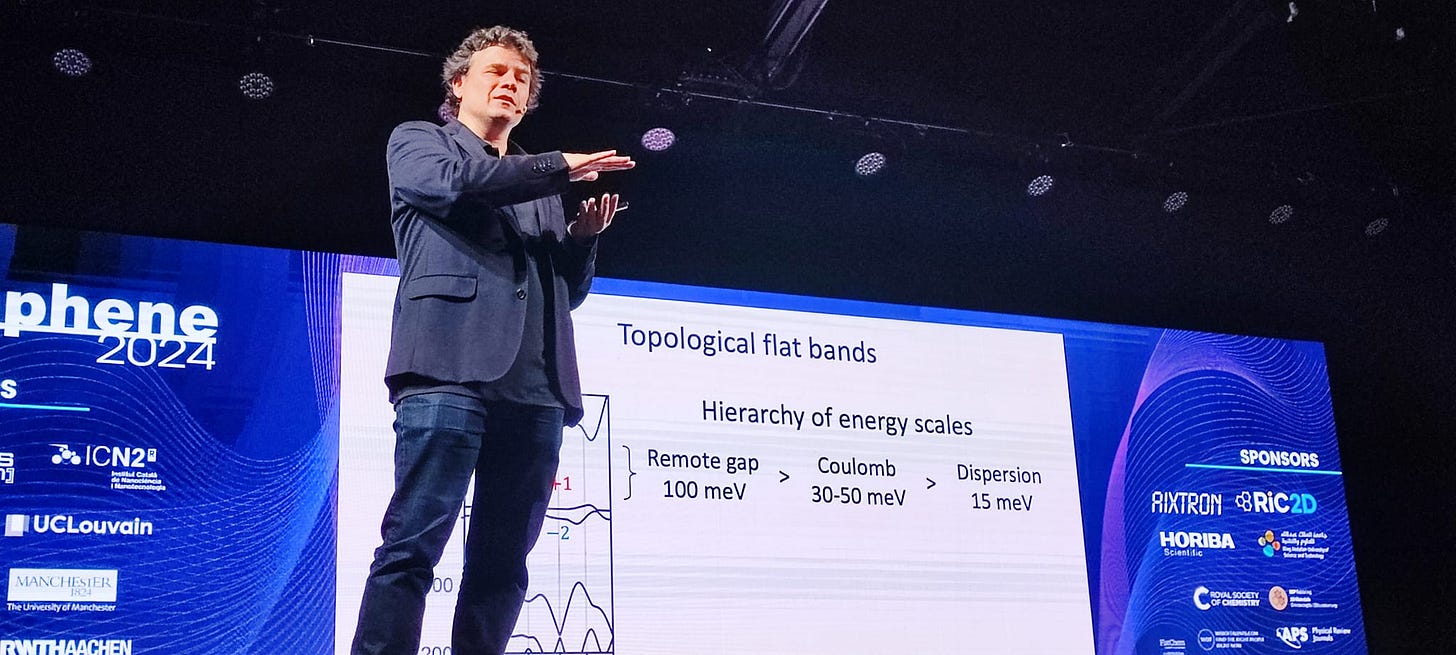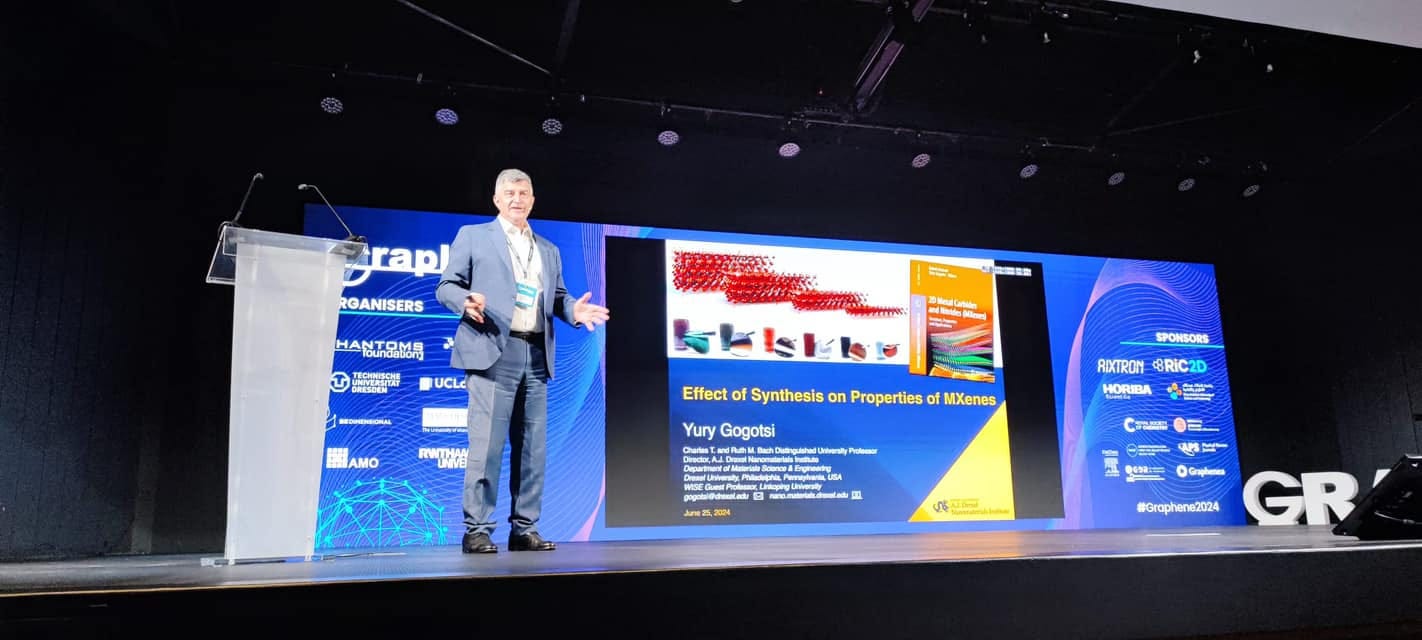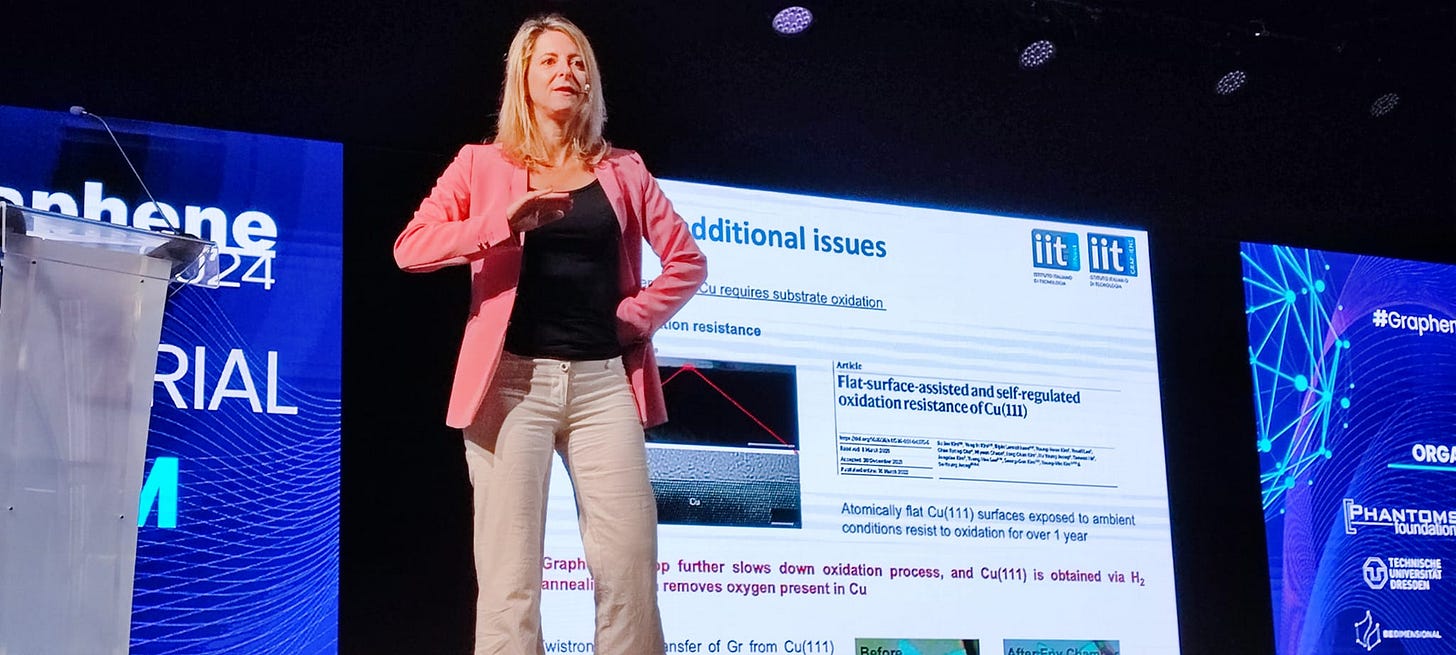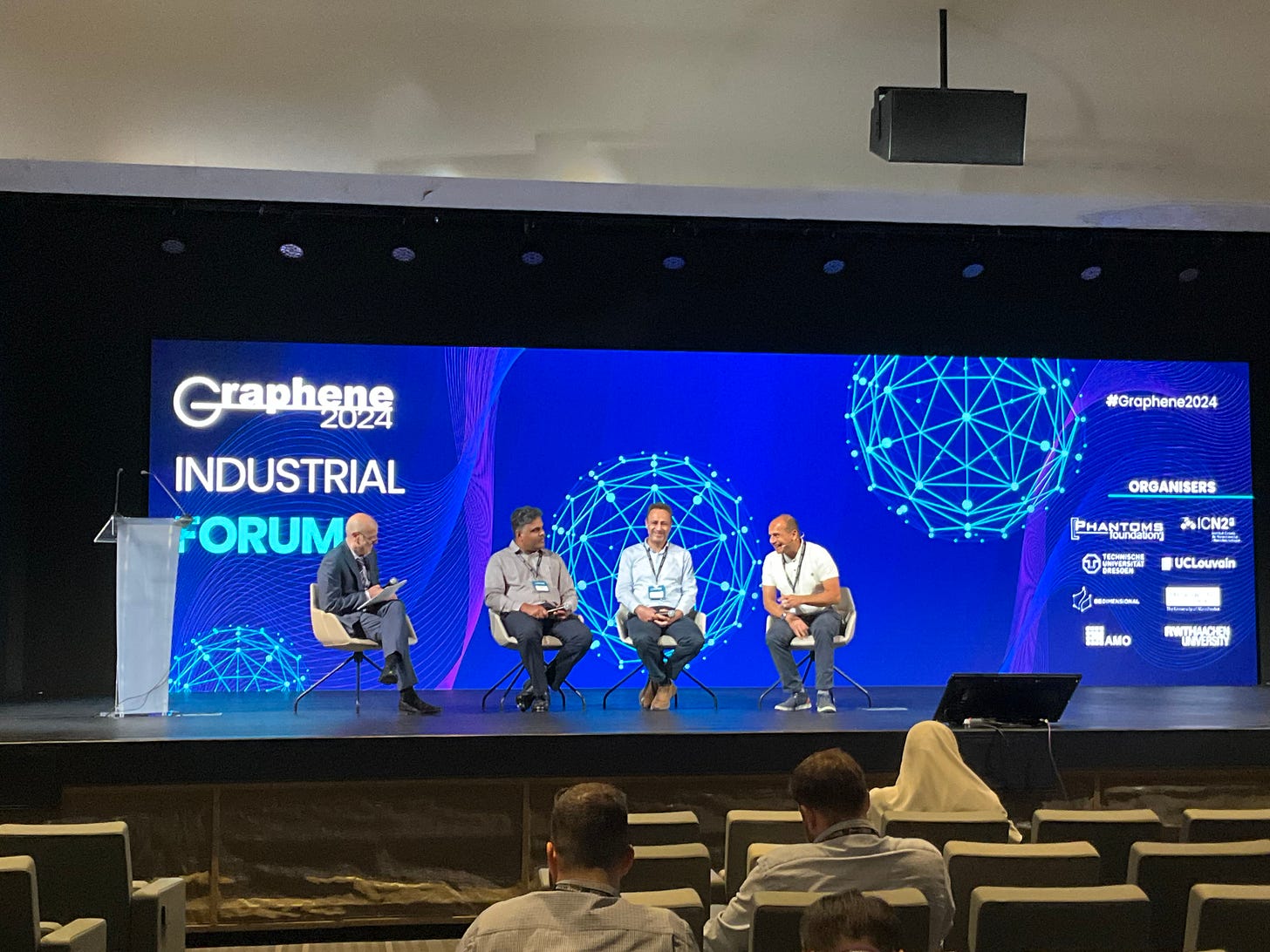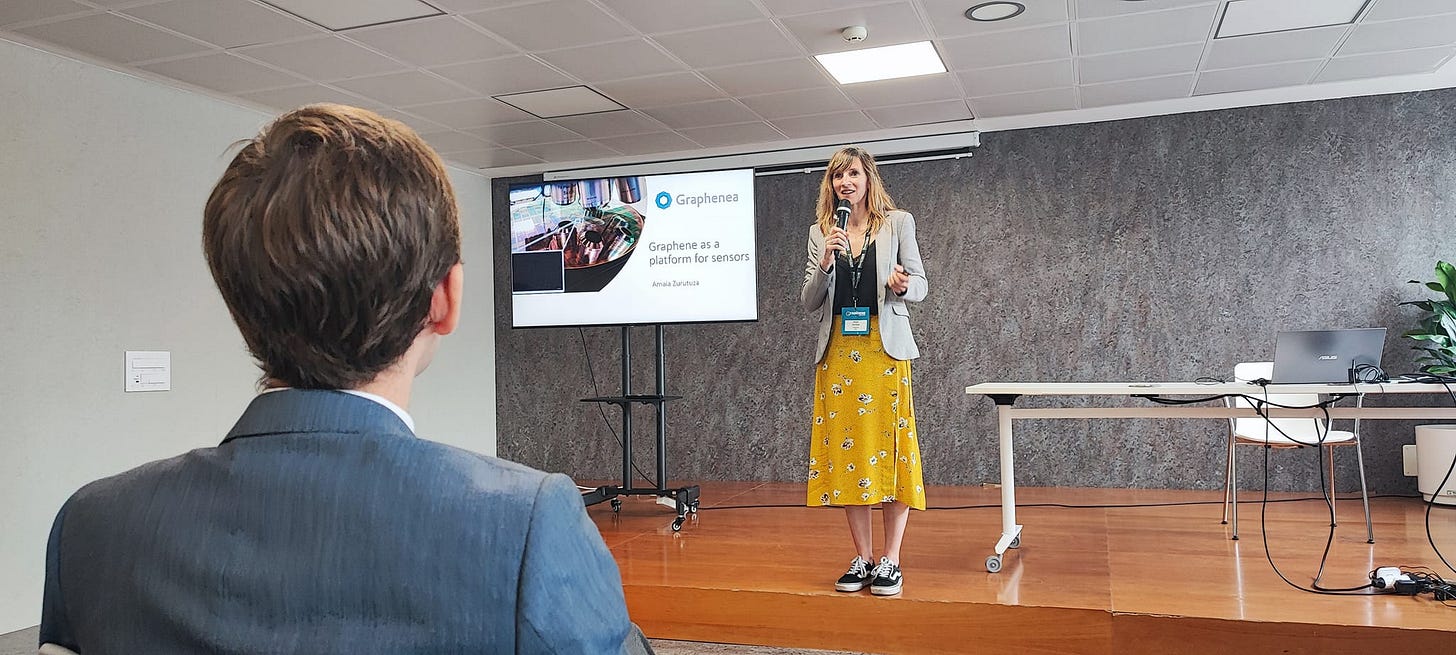Graphene2024 - (Summary)
Graphene2024 Conference: Pushing the Boundaries of Innovation in Madrid
The 14th edition of Graphene Conference series, the largest European Event in Graphene and 2D Materials, was organized in Madrid (Spain): June 25-28, 2024. Over the past editions, the Graphene Conference strengthened its position as the main in-person meeting point of the Graphene community Worldwide.
This cutting-edge International Conference will bring together world leaders, prominent researchers, and industry visionaries to explore and unlock the boundless potential of graphene and 2D Materials.
The Graphene2024 conference provided an exceptional platform for attendees to delve into a wide array of thought-provoking talks and presentations. Visionary speakers from academia, industry, and research institutions took the stage to share pioneering insights and discoveries. From innovative applications to groundbreaking advancements in graphene-based technologies, the diverse range of talks offered a fascinating glimpse into the vast potential of this extraordinary material.
A standout feature of Graphene2024 was the active involvement of numerous companies, showcasing their latest graphene-based products and technological innovations. Attendees had the opportunity to engage with these forward-thinking enterprises, witnessing firsthand how graphene is poised to transform industries worldwide.
In this post, we will explore some of the most remarkable and noteworthy presentations from Graphene2024. Join us as we dive into the cutting-edge research, innovations, and discussions that continue to shape the future of graphene.
Stay tuned for a journey through the most compelling talks and insights from Graphene2024, where groundbreaking discoveries are pushing the boundaries of possibility.
Pablo Jarillo-Herrero is currently Cecil and Ida Green Professor of Physics at MIT. He received his “Licenciatura” in physics from the University of Valencia, Spain, in 1999. Then he spent two years at the University of California in San Diego, where he received a M.Sc. degree before going to the Delft University of Technology in The Netherlands, where he earned his Ph.D. in 2005. After a one-year postdoc in Delft, he moved to Columbia University, where he worked as a NanoResearch Initiative Fellow. He joined MIT as an assistant professor of physics in January 2008 and received tenure in 2015. He was promoted to Full Professor of Physics in 2018. His awards include the Spanish Royal Society Young Investigator Award (2006), an NSF Career Award (2008), an Alfred P. Sloan Fellowship (2009), a David and Lucile Packard Fellowship (2009), the IUPAP Young Scientist Prize in Semiconductor Physics (2010), a DOE Early Career Award (2011), a Presidential Early Career Award for Scientists and Engineers (PECASE, 2012), an ONR Young Investigator Award (2013), and a Moore Foundation Experimental Physics in Quantum Systems Investigator Award (2014). Prof. Jarillo-Herrero has been selected as a Highly Cited Researcher by Clarivate Analytics-Web of Science (2017-present), and was elected APS Fellow (2018), Fellow of the Quantum Materials Program of the Canadian Institute for Advanced Research (CIFAR, 2019), and Member at Large of the APS Division of Condensed Matter Physics (2019). Prof. Jarillo-Herrero is the recipient of the APS 2020 Oliver E. Buckley Condensed Matter Physics Prize, the 2020 Wolf Prize in Physics, the 2020 Medal of the Spanish Royal Physics Society, the 2021 Lise Meitner Distinguished Lecture and Medal, and the 2021 US National Academy of Sciences Award for Scientific Discovery.
Abstract: Next Generation Moiré Quantum Matter represents a cutting-edge area of research that explores the exotic properties emerging from moiré patterns formed when two layers of 2D materials, such as graphene, are stacked with a slight twist. These materials exhibit new quantum phenomena, including superconductivity, magnetism, and topological states, driven by the unique electronic interactions at the moiré superlattice scale. This field promises to unlock unprecedented control over quantum states, paving the way for revolutionary advances in quantum computing, materials science, and nanoelectronics.
Dr. Yury Gogotsi is Distinguished University Professor and Charles T. and Ruth M. Bach Professor of Materials Science and Engineering at Drexel University. He also serves as Director of the A.J. Drexel Nanomaterials Institute. He received his MS (1984) and PhD (1986) from Kiev Polytechnic and a DSc degree from the Ukrainian Academy of Sciences in 1995. His research group works on 2D carbides and nitrides (MXenes), nanostructured carbons, and other nanomaterials for energy, water and biomedical applications. He published more than 800 papers, which have been cited more than 170,000 times. He has been recognized as a Highly Cited Researcher in Chemistry and Materials Science, and a Citations Laureate in Physics by Clarivate Analytics. He has received numerous awards for his research including a Chemistry of Materials Award from ACS, MRS Medal, S. Somiya Award from IUMRS, European Carbon Association Award, Materials Innovation Award from Materials Today, International Nanotechnology Prize (RUSNANOPrize), R&D 100 Awards from R&D Magazine and many other distinctions. He has been elected a Fellow of the European Academy of Sciences, World Academy of Ceramics, AAAS, MRS, ACerS, ECS, RSC and ISE. He holds honorary doctorates from several European universities.
Abstract: 2D carbides, nitrides, and carbonitrides of early transition metals known as MXenes are the most chemically and structurally diverse family of inorganic materials discovered this century. MXenes are among the few nanomaterials that have jumped into the limelight not only because of their exotic structure or attractive properties but also because of numerous practical applications. The family of MXenes has been expanding rapidly since the discovery of Ti3C2 at Drexel University in 2011. About 50 different stoichiometric MXenes have been reported, dozens of solid solutions have been made, and the structure and properties of numerous other MXenes have been predicted. The availability of solid solutions on M and X sites, multi-element high-entropy MXenes, control of surface terminations, and the discovery of out-of-plane ordered double-M o-MXenes (e.g., Mo2TiC2), as well as in-plane ordered i-MAX phases and their i-MXenes offer the potential for producing an almost infinite number of new 2D materials. This presentation will describe the state of the art in the synthesis of those MXenes by wet chemical and molten salt etching of MAX phases, CVD, and topochemical transformation of graphite and oxides. Their delamination into single-layer 2D flakes and assembly into films will also be covered. Synthesis-structure-properties relations of MXenes will be described. Hydrophilic surfaces of wet chemically etched MXenes allow environmentally friendly and scalable manufacturing and processing of MXenes from dispersions in water, with no surfactant or binder added. The hydrophobic halogen-terminated MXenes are better dispersible in organic solvents. The versatile chemistry of the MXene family renders their properties tunable for a large variety of energyrelated, electronic, optical, biomedical, and other applications, but the synthesis method, surface termination and delamination largely determine the properties and the range of applications of MXenes.
Camilla Coletti is a tenured Senior Scientist of the Istituto Italiano di Tecnologia (IIT) and principal investigator of the research line 2D Materials Engineering. She is the coordinator of the Center for Nanotechnology Innovation (CNI@NEST) of Pisa and of the Graphene Labs. She has been hired by IIT in 2011 after being an Alexander von Humboldt postdoctoral fellow at the Max Planck Institute for Solid State Research of Stuttgart (Germany). She received her PhD degree from the University of South Florida in 2007 and her MS degree from the University of Perugia in 2004 (both in Electrical Engineering). She is expert in the synthesis of highly-crystalline 2D materials via chemical vapour deposition (CVD) and in the investigation of their electronic, chemical and structural properties. Her research is focused on: (i) synthesis and integration of scalable 2D materials for optoelectronics, photonics and biomedicine; (ii) engineering the interface and properties of 2D heterostructures. Overall, she is author of more than 150 peer-reviewed publications, authored 4 book chapters, edited 1 book, filed several international patents (holds 3) and delivered more than 50 invited talks at international conferences.
Abstract: The scalable synthesis of graphene over flat and rigid templates – displaying quality comparable to that of mechanically exfoliated crystals – has become a central topic in the last years, as it would enable several high-end applications, scalable twistronic devices, and pave the way to enticing quantum technologies. In this talk, I will introduce the growth via non-reducing chemical vapor deposition (CVD) of decoupled graphene on crystalline Cu films deposited on sapphire. The resulting graphene is lying atop a thin Cu2O layer, and is charge neutral, low strained, and easy to transfer. Electrical transport measurements reveal unprecedented room temperature carrier mobilities for graphene grown on rigid substrates, exceeding 105 cm2 V−1 s−1 upon encapsulation in hexagonal boron nitride, thus opening realistic pathways for graphene-based high-end applications, including the exploration of innovative quantum platforms. Concerning the adoption of CVD graphene in twistronics, I will introduce new findings in CVD large-angle-twisted multilayer graphene. Finally, I will discuss the transformative potential of artificial intelligence (AI) in materials science by demonstrating artificial neural network (ANN) assisted growth of high-quality graphene.
Following the success of last year's edition, the INDUSTRIAL FORUM maintained the 2-day format (June 26-27, 2024) and presented the most recent advances in technology developments and business opportunities in graphene commercialization. Key representatives of "graphene companies" shared their market vision and business opportunities, while selected talks from industrial exhibitors showcased commercial examples in all current market fields of graphene products.
The INDUSTRIAL FORUM focused on the latest developments in graphene production methods toward wide-scale commercialization, emerging opportunities for graphene-based materials, determining criteria for graphene investment opportunities, and provided the latest updates on the application of graphene in electronics, energy storage, aerospace, and barrier applications.
Several specific sessions were also organized within the Industrial Forum:
"CVD of 2D Materials and Devices" session sponsored by AIXTRON
This AIXTRON Industrial session welcomed all those in the community aiming to drive the adoption of 2D materials into mass manufacturing markets. Talks in the session discussed methods for large-scale CVD synthesis of 2D materials, along with examples of cutting-edge devices from a broad range of applications, presented by leading researchers and companies from around the world.
"Graphene Applications in Desalination & Water Filtration" session sponsored by RIC2D
In a world facing critical water shortages, with over 2 billion people lacking access to safe drinking water, sustainable solutions were no longer a luxury but a necessity. Graphene and other 2D materials held the potential to revolutionize desalination and water treatment technologies, particularly due to their unique anti-fouling and natural antimicrobial properties.
RIC2D hosted this dynamic session on "Graphene Applications in Desalination & Water Filtration," bringing together leading researchers and industry pioneers who explored the latest advancements in science and industrial applications. RIC2D played a critical role in advancing such technologies in the UAE by facilitating local and international partnerships.
By incorporating graphene materials-based technologies into major civilian sectors, GIANCE strengthened the competitiveness of European industries while positioning the region as a global leader and promoting sustainability. There was a talk on the framework to approach various applications, another on hydrogen production and conversion using printed graphene, and the final presentation addressed a robust modular and integrated conceptual eco-design of products using innovative graphene materials-based solutions, supported by LCA. Within the European ecosystem for 2D materials, GIANCE acted as a catalyst for innovation and industrial advancement.
Francesco Bonaccorso (BeDimensional, Italy)
Amaia Zurutuza (Graphenea, Spain)
Graphene2024 featured 10 parallel workshops, covering topics from "Graphene Flagship & Innovation" to "Energy Storage Applications" and "2D Materials and Devices." These workshops provided a platform for numerous experts to present cutting-edge research and industrial applications of graphene and related materials. 36 were the total number of speakers involved in these workshops.





